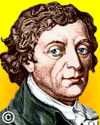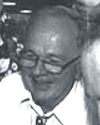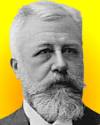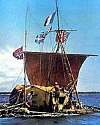
On 28 Apr 1753, Franz Karl Achard was born, the German chemist and experimental physicist who invented a process for the large-scale extraction of table sugar (sucrose) from beets, and in 1801, opened the first sugar-beet factory, in Silesia (now Poland).
The beet may have been known to the builders of the pyramids, but it was the English blockade of French ports that spurred Napoleon to seek an alternate source of sugar without relying on imported supplies. No sugar! Sacre bleu! Napoleon was fully cognizant of what a privation this was to his people. On 25 Mar 1811, he issued a decree that set in motion the beet industry of the world.
Now you may appreciate why Achard’s invention was so significant! For more background, read this history of Beet Sugar in Europe from Something About Sugar: Its History, Growth, Manufacture and Distributions (1917).

On 28 Apr 1906, Bart J. Bok was born, whose name is remembered in the “Bok globules” that he was first to investigate. These are dark clouds of dense gas and dust visible against a background of bright nebulae. Bok globules have a mass of 10 to 50 times the mass of the Sun and are about a light year across. Bok’s other important work was on the structure and evolution of the Milky Way Galaxy, which makes him an ideal author for a book on that subject. Today's book pick is: The Milky Way: Fifth Edition (Harvard Books on Astronomy), by Bart J. Bok, Priscilla F. Bok, in which he covers such aspects and components as observational data, neighboring stars, clusters, galactic motion, the nucleus, interstellar gas, nebulae, and galactic structure and change.
It is available from Amazon, typically about New from $113.74. Used from $5.00. (As of earlier time of writing - subject to change.)
 | I gleaned more practical psychology and psychiatry from the Bible, than from all other books! |
 | For many years I have been a night watchman of the Milky Way galaxy. |
 | To do successful research, you don’t need to know everything, you just need to know one thing that isn’t known. |
| Before you look at today's web page, see if you can answer some of these questions about the events that happened on this day. Some of the names are very familiar. Others will likely stump you. Tickle your curiosity with these questions, then check your answers on today's web page. | |
| Births | |
 | An American planetary geologist, born 28 Apr 1928, co-discovered (with Levy) a comet which collided with Jupiter (1994), the first observed collision of two solar system bodies. What is the name of this scientist? |
 | Jan Hendrik Oort, born 28 Apr 1900, was a physicist and astronomer who was one of the most important figures in 20th-century efforts to understand the nature of the Milky Way Galaxy. In 1950, Oort proposed the now generally accepted model for the origin of comets from the “Oort Cloud.” What nationality was Oort? |
| Deaths | |
 | Edouard van Beneden (1846-1910) was a Belgian embryologist and cytologist best known for his discoveries concerning fertilization in sex cells and chromosome numbers in body cells. What was discovery concerning the number of chromosomes in body cells with different functions of a single species? |
| Events | |
 | On 28 Apr 1962, a balsa raft, and a crew of six left Peru, bound for Polynesia, which was reached 101 days later. The captain was anthropologist Thor Heyerdahl, who wished to demonstrate that the ancient Polynesians could in the same way have originated from South America. What was the name of his famous craft? |
 | On 28 Apr 1926, the term “wave mechanics” was coined by a nuclear physicist in a letter he sent to Albert Einstein. The term was applied to the newly emerging branch of physics which interprets the behavior of subatomic particles according to a mathematical description in terms of a wave motion. What is the name of the physicist who coined the name “wave mechanics”? |
Fast answers for the previous newsletter for April 27: nylon • Samuel (Morse) • Arbor Day • named for the German physicist Otto Hahn • the decade including the year 1880.
 If you enjoy this newsletter, the website, or wish to offer encouragement or ideas, please send feedback by using your mail reader Reply button.
If you enjoy this newsletter, the website, or wish to offer encouragement or ideas, please send feedback by using your mail reader Reply button. Your click on a Facebook, StumbleUpon, or other social button on the site webpages is also a welcome sign of appreciation. Thank you for using them.
© This newsletter is copyright 2020 by todayinsci.com. Please respect the Webmaster's wishes and do not put copies online of the Newsletter — or any Today in Science History webpage. (If you already have done so, please remove them. Thank you.) Offline use in education is encouraged such as a printout on a bulletin board, or projected for classroom viewing. Online, descriptive links to our pages are welcomed, as these will provide a reader with the most recent revisions, additions and/or corrections of a webpage. For any other copyright questions, please contact the Webmaster by using your mail reader Reply button.
--
If you do not want to receive any more newsletters, Unsubscribe
To update your preferences and to unsubscribe visit this link
Executive Real Estate Business Class
-
"It was like a man with wings. It wasn't like anything you'd see on TV or in a monster movie." ...
About the publisher
Search This Blog
Blog Archive
-
▼
2021
(585)
-
▼
April
(57)
- On This Day for April 30 - George Washington inaug...
- Newsletter for Friday 30 April.
- On This Day for April 29 - British royal wedding, ...
- Newsletter for Thursday 29 April.
- On This Day for April 28 - Benito Mussolini execut...
- Newsletter for Wednesday 28 April.
- On This Day for April 27 - Independence for Sierra...
- Newsletter for Tuesday 27 April.
- On This Day for April 26 - Chernobyl nuclear accid...
- Newsletter for Monday 26 April.
- On This Day for April 25 - Hubble Space Telescope ...
- See How They Tracked Down Bin Laden
- Newsletter for Sunday 25 April.
- On This Day for April 24 - Installation of Pope Be...
- Newsletter for Saturday 24 April.
- On This Day for April 23 - Voting for Eritrea's in...
- Earth Day Bonus: Become a Climate Action Expert
- On This Day for April 22 - First Earth Day, Miguel...
- On This Day for April 21 - French elections held, ...
- Newsletter for Wednesday 21 April.
- On This Day for April 20 - Explosion on the Deepwa...
- Newsletter for Tuesday 20 April.
- On This Day for April 19 - American Revolution beg...
- Newsletter for Monday 19 April.
- On This Day for April 18 - The midnight ride of Pa...
- Newsletter for Sunday 18 April.
- On This Day for April 17 - Canada Act proclaimed, ...
- Newsletter for Saturday 17 April.
- On This Day for April 16 - Harriet Quimby's flight...
- Newsletter for Friday 16 April.
- On This Day for April 15 - Sinking of the Titanic,...
- Newsletter for Thursday 15 April.
- On This Day for April 14 - Abraham Lincoln shot, J...
- On This Day for April 13 - Alfred Dreyfus imprison...
- Newsletter for Tuesday 13 April.
- On This Day for April 12 - Launch of first space s...
- Newsletter for Monday 12 April.
- John of Gaunt: father of England’s medieval monarchy
- On This Day for April 11 - Napoleon's abdication a...
- Newsletter for Sunday 11 April.
- On This Day for April 10 - Anschluss approved in A...
- On This Day for April 9 - Fall of Baghdad, Jørn Ut...
- Newsletter for Friday 9 April.
- On This Day for April 8 - Celebration of the Buddh...
- On This Day for April 7 - Jack Nicklaus's first Ma...
- Newsletter for Wednesday 7 April.
- On This Day for April 6 - Olympics revived, Raphae...
- On This Day for April 5 - Battle of Maipú, Colin P...
- The history and origins of Easter
- On This Day for April 4 - Martin Luther King, Jr.,...
- Newsletter for Sunday 4 April.
- On This Day for April 3 - Implementation of the Ma...
- Newsletter for Saturday 3 April.
- On This Day for April 2 - Death of Pope John Paul ...
- Newsletter for Friday 2 April.
- On This Day for April 1 - Creation of Nunavut, Ser...
- Newsletter for Thursday 1 April.
-
▼
April
(57)
-
Blogroll
-
About
HistoryFact










0 comments:
Post a Comment